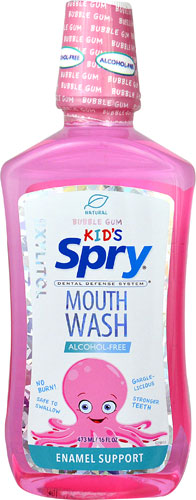It's a question all new parents have: when, exactly, should you start brushing your baby’s teeth? A lot of information exists out there , so it's easy to get confused. But when it really comes down to it, it’s not as complicated as you might think. According to the American Dental Association, as soon as you see those little pearly whites peeking through, it’s time to start brushing them, but how and with what varies depending on your baby’s needs.
What age?
The average age for first teeth to erupt is between 6 and 12 months, but it’s not uncommon to see them sooner. For an infant that is not eating solid foods yet and the teeny tiniest of teeth are just starting to show, rubbing them with a clean damp cotton cloth is a simple way to remove any natural sugars that may be clinging on and around them. If your baby is a little older and you’ve already started on solid baby food, then the ADA recommends you jump right in and use a tooth brush. Take note, you’ll be doing the brushing for several years (it’s recommended parents run interference and help their kids do a thorough brushing until at least age 8), so this is your time to establish healthy dental hygiene habits.
Which brushes and toothpaste?
Parents today are pretty lucky, they don’t have to whittle a tooth brush out of a tree branch and fashion boar hairs to it (no really, that’s what the early toothbrushes were made of). Any superstore out there will have an expansive collection of baby tooth brushes, ranging in size, bristle softness, and style. Even better, most of them have a “recommended age” right on the package. But just in case you’re unsure, for infants you should always choose a very small brush with extra-soft bristles and a handle that fits well in YOUR hand. Talk through what you’re doing and why, because even the most trusting kids might not be thrilled about you messing around in their mouth with a plastic utensil. As they get older the brush should still be on the softer side to prevent any gum damage and make sure they know it’s not about brushing harder, but better.
Whether or not to use a fluoridated toothpaste is a pretty big point of contention these days. While there are scientifically sound reasons why toothpaste and dental rinses with fluoride help strengthen tooth enamel, and it is recommended by the American Dental Association as soon as your baby has teeth, there is also a counter argument that between fluoridated water, toothpaste with fluoride, mouth rinse with fluoride, and fluoride treatments at the dentist, we may be overzealous with the stuff. Decide what is right for you and your family and choose a toothpaste accordingly.
As for flossing, there’s is simple rule of thumb: If the teeth are touching, it’s time to floss. Use a handled flosser (the most popular styles come in individual disposable “picks” or handles with replaceable floss heads) because you’ll never get your giant hands in your infant or toddler’s mouth, and why even try when these tools make it easier and faster.
When to begin dental exams?
While some sources will say start seeing the dentist as soon as you see teeth, it’s not really the most necessary time to start. These early visits are usually to make sure your little one’s mouth and teeth are developing properly and climate them to the dental exam experience. While it’s true, if there are teeth there can be cavities, you’ll still find many dentists who recommend starting regular bi-annual dental check up starting around three years old (first x-rays are usually done at four years of age then once a year thereafter).
Your best bet in making dental check ups a pleasant (or as pleasant as can be) experience is to find a dentist’s office dedicated solely to children. Plus, they’re way cooler than the boring grown-up dentist office, because let’s be honest, when was the last time your dentist gave you a sticker and a jump rope for sitting politely through your appointment?




